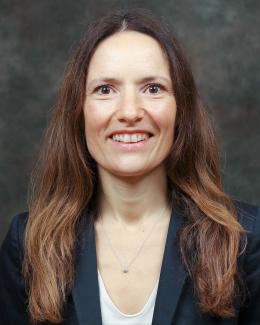July 8, 2013 - For Alice Vrielink, the chance to use a new neutron instrument at the High Flux Isotope Reactor was well worth the 28-hour trek from Australia to Oak Ridge National Laboratory. Vrielink, a professor at the University of Western Australia, is the first external user of IMAGINE, a newly commissioned beam line at HFIR. Her samples -- specks of amber-like protein crystals grown by UWA gradate student Emily Golden -- also traveled halfway across world to reach the IMAGINE sample chamber.
"This specific instrument is ideally suited to macromolecules of the size that I'm wanting to look at," Vrielink said. "It's a big molecule -- about 600 amino acids -- and this instrument is suited for that magnitude of a problem."
The molecule in the spotlight is a bacterial enzyme called cholesterol oxidase, which is of interest to the agricultural and biomedical communities. The enzyme is found in some virulent bacteria that cause lung infections in immune-compromised individuals, such as people with AIDS.
"The idea is that one of the ways you could treat these patients is to design a drug that inhibits this enzyme," Vrielink said. "There are a lot of problems with antibacterial resistance, and you always need to stay two steps ahead of the bacteria and their resistance mechanisms. This would be a novel antibacterial agent that could treat people who suffer from these kinds of infections."
Neutron scattering analysis at the IMAGINE instrument at HFIR enables Vrielink to 'see' the enzyme's hydrogen atoms, which she believes play a critical role in the molecule's chemical reaction. Mapping the position of the enzyme's hydrogen atoms in different steps of the reaction will help her better understand the chemical process and perhaps design ways to block the response.
"The best way to look at hydrogen is through neutron scattering, and this is one of the best places to do neutron scattering," Vrielink said.
Analyzing hydrogen atoms in proteins is one of the key missions of IMAGINE, says Flora Meilleur, the lead instrument scientist who holds a joint appointment between ORNL and North Carolina State University. The instrument is designed for the study of light atoms, such as hydrogen, in materials across diverse fields in structural biology, chemistry and geological sciences.
"We can change the beam line configuration to measure something relevant to biomedical applications today and then something relevant to geosciences tomorrow," Meilleur said. "The samples for those areas of science are very different, and we can configure the beam line with a click of a button."
Meilleur looks forward to welcoming more researchers like Vrielink to the IMAGINE beam line as part of the facility's user program, which is accepting proposals to access the beam line. As for Vrielink, plans are already in place for "more visits, more crystals, more data," she says.
"This is just the beginning of our studies with neutrons," Vrielink said. "The data that we're getting are really promising -- that makes the trip worthwhile."
IMAGINE is supported by the Department of Energy and a National Science Foundation award to Middle Tennessee State University. More information about IMAGINE is available at http://neutrons.ornl.gov/imagine/.


